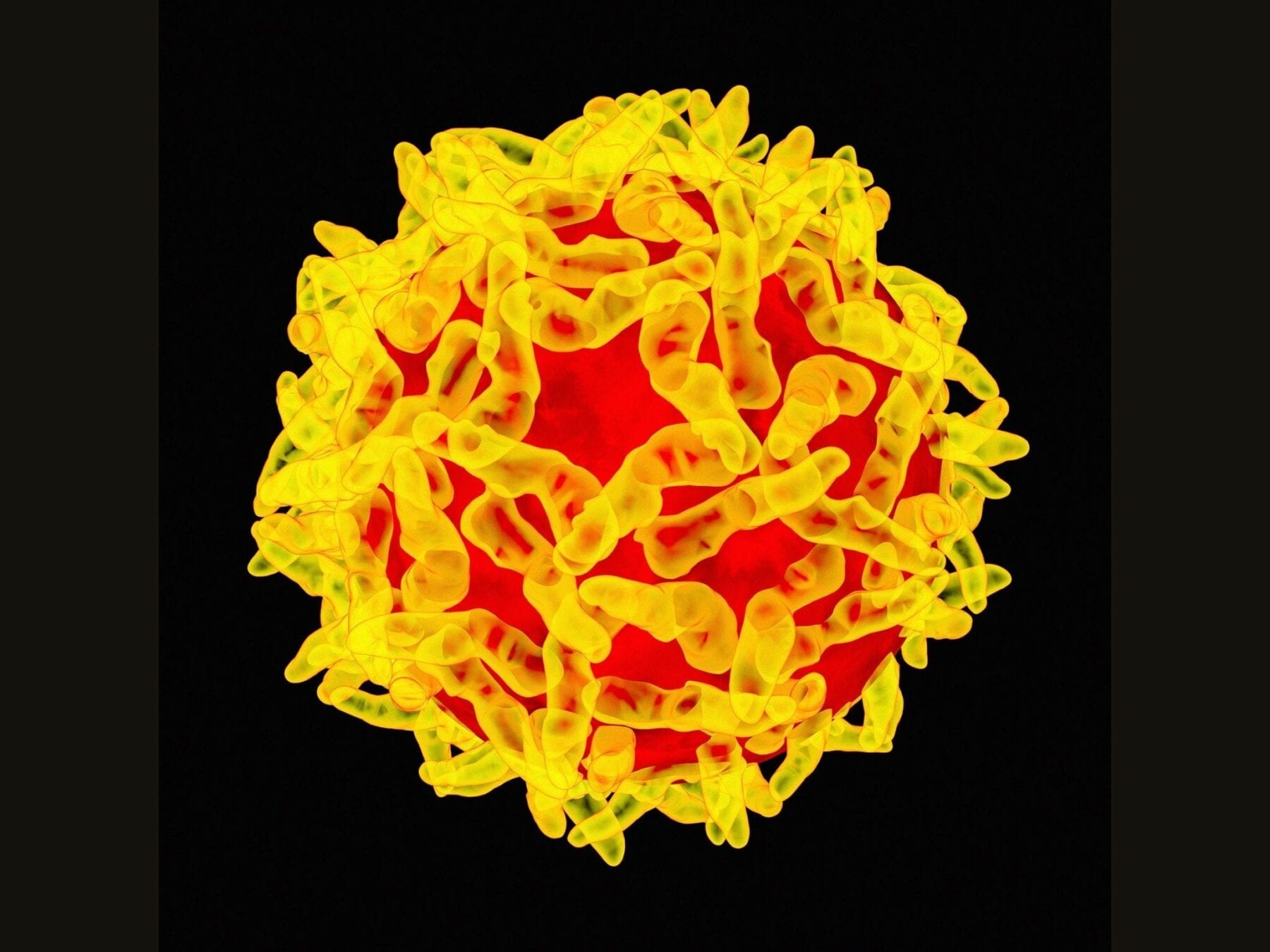
Every year, October 4 is all about the protection of animals. On World Animal Day, animal welfare organisations around the globe advocate the respectful treatment and welfare of animals.
One of the central demands of the animal activists is to abolish animal testing and to use alternative testing methods instead. In this context, the European Union has taken a huge step forward at the beginning of this year: On March 11 a full ban on the marketing of cosmetics and hygiene products tested on animals entered into force in the EU.
The search for alternative testing methods for safety assessment is, thus, more pressing than ever. The development of such non-animal testing methods, especially when it comes to reliably predicting long-term toxic effects, represents a major scientific challenge. The NOTOX project, which is co-funded by the European Commission and Cosmetics Europe, the European trade association of the cosmetics industry, significantly contributes to this endeavor by developing and validating predictive bioinformatics models characterizing long-term toxicity responses.
“These computer-aided models will help predict possible long-term toxic effects on the human body,” explains Elmar Heinzle, Professor of Applied Biochemistry and Biochemical Engineering at Saarland University, who coordinates the NOTOX project.
In consequence, the use of living organisms to test the safety of substances to be found in daily-life products such as make-up, soap or toothpaste is no longer needed.
Computer-aided models as an alternative to animal testing
The liver is the central organ for the elimination of toxic substances in the human body. Therefore NOTOX scientists closely examine in test-tube experiments how such substances affect human liver cells in the long run. The processes and reactions they observe in the cells are being translated into highly complex computer models. The overall goal is to develop algorithms that closely mimic the processes which actually take place in human tissues when exposed to toxic substances. These computational models will allow for reliable long-term predictions and thus help to replace animal testing in the long run.
In order to achieve this ambitious goal, NOTOX brings together eleven internationally renowned and interdisciplinary research teams from all over Europe, including academic research laboratories and four small and medium sized enterprises (SMEs). Apart from Professor Heinzle and his research team, additional partners from Saarland are involved in the project. These include the department of Genetics/Epigenetics at Saarland University, the German Research Centre for Artificial Intelligence (DFKI) as well as the European Research and Project Office GmbH – Eurice, responsible for the management of a large number of European research projects at Saarland University.
The Latest Bing News on:
Alternative to animal testing
- Animal testing can be cut thanks to local researcherson April 24, 2024 at 9:01 am
Animal testing is often necessary to ensure the safety of pharmaceuticals, pesticides and cosmetics before they can hit the market, but local researchers have developed 102 alternative testing methods ...
- Opinion: It’s time to stop product and science testing on animalson April 24, 2024 at 3:44 am
Science has given us many marvels. Electricity immediately springs to mind, as does the telephone. The remarkable ease with which we’re able to trace our ancestry is utterly astounding, and ...
- World Day for Animals in Laboratories: Why animal testing should be bannedon April 24, 2024 at 12:10 am
Animal-testing activists have come a long way in advocating for countries to ban animal-testing, and in doing so, many local and international brands have hopped on the bandwagon, finding alternative ...
- Council Approves Narrow Animal Testing Banon April 19, 2024 at 7:45 am
City Council narrowly approved a ban on animal testing or experimentation on property owned or controlled by the City of Alameda, with some notable exceptions. Karin K. Jensen details the steps that ...
- Scientists grow human mini-lungs as animal alternative for nanomaterial safety testingon April 18, 2024 at 8:35 am
Human mini-lungs grown by University of Manchester scientists can mimic the response of animals when exposed to certain nanomaterials. The study is published in Nano Today.
- Charles River launches program for animal testing alternativeson April 18, 2024 at 3:00 am
Charles River Laboratories has launched a new project to cut down on animal testing in drug discovery. | Charles River Laboratories, a major supplier of animal models, has launched a new project to ...
- VA to largely end animal testing on dogs, cats within two yearson April 17, 2024 at 5:00 pm
(Gino Mattorano / Evans Army Community Hospital) Testing on dogs ... but encouraged alternatives to live-animal tests should be pursued, Military Times previously reported.
- Innovating drug development: Charles River embracing alternatives to animal testingon April 16, 2024 at 7:39 am
Charles River Laboratories International, Inc. has unveiled its Alternative Methods Advancement Project (AMAP), a strong initiative aimed at changing drug discovery and development by exploring ...
- Charles River Laboratories Launches Alternative Methods Advancement Project to Reduce Reliance on Animal Testingon April 16, 2024 at 5:00 am
Grounded in the need to prove the scientific rigor, AMAP initiatives include research projects confirming the safety and efficacy of alternatives ... reliance on animal testing while bringing ...
- Charles River Laboratories Launches Alternative Methods Advancement Project to Reduce Reliance on Animal Testingon April 16, 2024 at 5:00 am
Charles River launches the Alternative Methods Advancement Project (AMAP), an initiative to develop alternatives to reduce animal testing.
The Latest Google Headlines on:
Alternative to animal testing
[google_news title=”” keyword=”alternative to animal testing” num_posts=”10″ blurb_length=”0″ show_thumb=”left”]
The Latest Bing News on:
Animal Testing
- Cattle testing for H5N1 bird flu will be more limited than USDA initially announcedon April 26, 2024 at 3:39 pm
The USDA order mandating H5N1 bird flu testing in dairy cows is less stringent than initially described by the agency.
- This Biotech Startup Aims To Speed Up Drug Testing On Animalson April 26, 2024 at 3:29 am
Gordian Biotechnology’s platform allows for potentially hundreds of gene therapies to be tested in an animal at the same time — without harming it.
- USDA issues UAB animal testing facilities warning, cite animal deaths and lack of veterinarian careon April 25, 2024 at 8:02 am
According to the warning, UAB is being cited for inadequate veterinarian care, allowing three ferrets to die, five others to be injured after being exposed to cigarette smoke while their supply of ...
- See how a former animal testing laboratory is transformed into an animal sanctuaryon April 25, 2024 at 7:04 am
An animal rights activist is turning an animal testing laboratory into a sanctuary and rehab center for dogs and cats who have spent their lives caged in a lab.
- Cheshire laboratory creates 'human skin' to avoid animal testingon April 25, 2024 at 3:39 am
A laboratory in Cheshire is pioneering ways to replace animal testing. Some of the tests that were originally designed for cosmetics have been around for more than 80 years. Dr Carol Treasure and her ...
- VA continues ‘approved’ experiments on dogs, cats and monkeys after Congress orders an end to live-animal tests by 2026on April 24, 2024 at 1:27 pm
Though the Department of Veterans Affairs is under order by Congress to phase out live animal experiments using cats, dogs and primates “with limited exceptions” by 2026, the agency continues to ...
- Animal testing can be cut thanks to local researcherson April 24, 2024 at 9:01 am
Animal testing is often necessary to ensure the safety of pharmaceuticals, pesticides and cosmetics before they can hit the market, but local researchers have developed 102 alternative testing methods ...
- Opinion: It’s time to stop science and product testing on animalson April 24, 2024 at 3:44 am
Science has given us many marvels. Electricity immediately springs to mind, as does the telephone. The remarkable ease with which we’re able to trace our ancestry is utterly astounding, and ...
- World Day for Animals in Laboratories: Why animal testing should be bannedon April 24, 2024 at 12:10 am
Animal-testing activists have come a long way in advocating for countries to ban animal-testing, and in doing so, many local and international brands have hopped on the bandwagon, finding alternative ...
- Column: Legislature acts to boost animal-testing transparencyon April 20, 2024 at 3:08 pm
Despite recent progress, transparency in our state’s animal testing facilities remains virtually non-existent, state Sen. Jennifer Boysko writes in a guest column.
The Latest Google Headlines on:
Animal Testing
[google_news title=”” keyword=”Animal Testing” num_posts=”10″ blurb_length=”0″ show_thumb=”left”]










